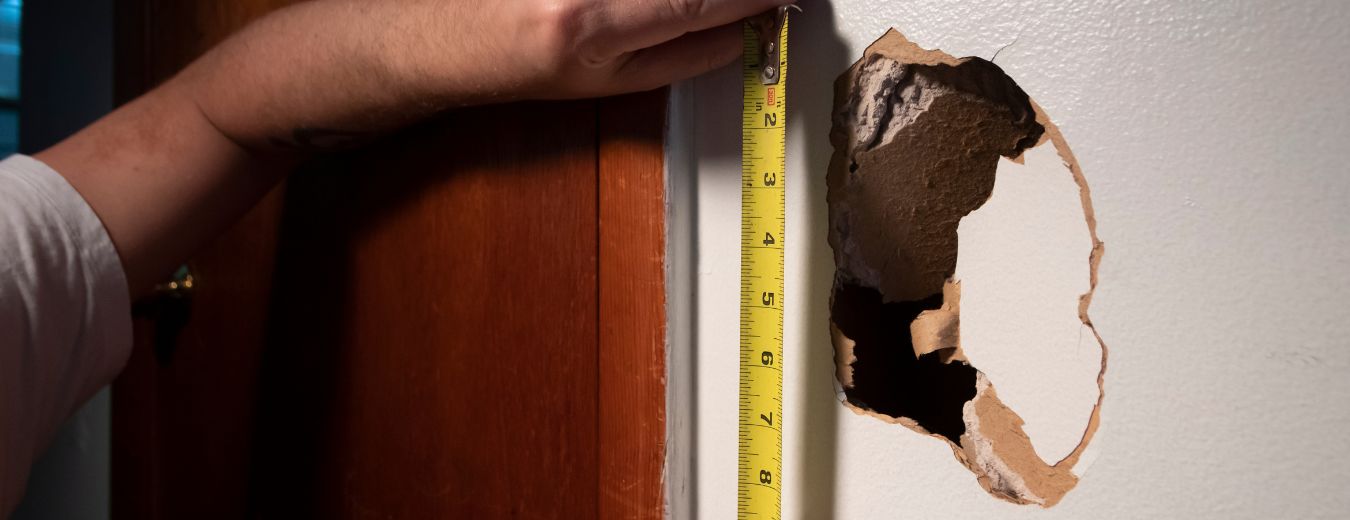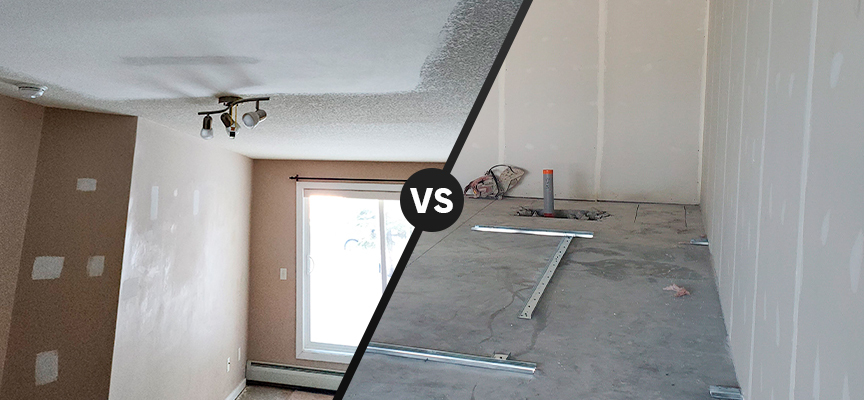Discover the Finest Practices for Effective Drywall Repair Work and Installment
The art of drywall repair and installment needs a blend of ability and precision. Understanding the necessary devices is essential for achieving a seamless finish. Understanding the step-by-step process can make a substantial difference in the outcome. Appropriate methods for taping and mudding are likewise critical. What remains is the knowledge of maintenance that guarantees longevity. These elements with each other develop a refined outcome worth discovering further.

Essential Devices for Drywall Repair Service and Installation
When undertaking drywall fixing and setup, having the right devices can substantially improve the efficiency and high quality of the work. An utility blade is important for reducing drywall sheets exactly, while a drywall saw can aid in making a lot more intricate cuts. Taping blades, offered in numerous sizes, are essential for applying joint substance efficiently and uniformly. A drywall sander, ideally with a dust collection feature, aids accomplish a refined surface, reducing the need for comprehensive cleaning.
Furthermore, a gauging tape assurances accurate dimensions, and a degree ensures that installations are straight and plumb. Security equipment, consisting of dust masks and goggles, should not be overlooked to shield versus debris and dirt. A stud finder aids in finding mounting members, guaranteeing protected installment. By equipping oneself with these necessary tools, the repair service and installment procedure becomes much more workable and leads to a professional-quality end result.

Step-by-Step Overview to Patching Holes
Patching holes in drywall requires an organized method to guarantee a seamless repair work. First, the location around the opening should be cleaned and any kind of loosened debris removed. For tiny openings, a putty knife can be utilized to apply a light-weight spackle, pushing it into the opening and smoothing the surface. After it dries out, sanding is vital to create a flat finish. For bigger openings, a patch of drywall may be needed. This includes reducing a piece of drywall a little larger than the opening, protecting it to the wall with screws, and utilizing joint compound to cover the joints. Once the compound dries, it must be fined sand smooth. Priming the patched location prior to painting will guarantee an also surface. Adhering to these actions will result in a professional-looking fixing that blends effortlessly with the surrounding wall.
Techniques for Seamless Drywall Setup
Achieving seamless drywall setup needs careful planning and implementation. It is necessary to reduce and measure drywall sheets precisely to lessen voids. Making use of an utility knife, installers must score the board prior to snapping it along the cut line, ensuring tidy edges. Correctly straightening the sheets is essential; beginning with the top and working down helps keep uniformity.
Attaching drywall to the studs requires constant spacing, generally every 16 inches, using screws instead than nails for far better hold. This strategy reduces the danger of pops in time. Furthermore, surprising the joints in between sheets improves structural stability and decreases the exposure of joints.
Using the right density of drywall for certain locations-- such as moisture-resistant kinds in shower rooms-- additional adds to a remarkable finish. Complying with these methods will certainly result in a smooth and professional-looking setup, setting the stage for the succeeding ending up procedures.
Completing Touches: Insulation and Mudding
Completing touches, such as taping and mudding, play an essential duty in attaining a sleek drywall surface. Taping includes applying a thin strip of drywall tape over the joints and joints, making sure a seamless look. This procedure helps protect against fractures and produces a solid bond in between drywall sheets. It is crucial to choose the appropriate sort of tape, with paper and fiberglass mesh being one of the most typical options.
Mudding, or using joint compound, complies with taping. This substance completes spaces and smooths out the surface area for an uniform coating. It is commonly applied in numerous layers, with each coat needing to dry before fining sand. Proper strategy entails feathering the sides to mix the compound right into the bordering drywall, lessening visibility.
When completed properly, mudding and taping enhance both the aesthetic and structural stability of the drywall setup, causing a professional-quality coating.
Tips for Maintaining Your Drywall After Installation

Additionally, preserving a consistent interior humidity level can protect against warping or mold and mildew growth. Making use of a dehumidifier in moist locations, like basements, is a good idea. It's also advantageous to occasionally repaint locations that show wear, as this secures the underlying material. When relocating furniture or setting up components, caution must be worked out to stay clear of harming the drywall. By following these upkeep tips, home owners can extend the life of their drywall, securing it remains an attractive function of their insides.
Often Asked Questions
What Safety Equipment Is Necessary for Drywall Fixing and Installation?
For drywall repair work and setup, crucial safety gear includes security goggles to shield eyes, dust masks to avoid breathing of fragments, handwear covers for hand defense, and knee pads for convenience throughout extended kneeling. Drywall Repair Ogden UT.
How Do I Figure Out the Drywall Density Needed for My Task?
To establish the drywall density required for a job, one must take into consideration the wall surface's architectural needs, neighborhood structure codes, and the planned usage of the room, typically opting for 5/8-inch or 1/2-inch drywall.
Can I Fix Drywall Without Removing Furnishings From the Area?
Yes, drywall can be fixed without removing furniture from the room. Mindful planning and safety measures can lessen mess, permitting effective fixings while maintaining surrounding things secure from dirt and damage throughout the process.
What Sorts of Drywall Are Ideal for Different Environments?
Moisture-resistant drywall is excellent for kitchen areas and washrooms, while soundproof drywall matches shared wall surfaces in homes. Fire-rated drywall is best for garages, and basic drywall works well as a whole living locations, guaranteeing sturdiness and suitability for numerous atmospheres.
How much time Does It Take for Drywall Mud to Dry Completely?
Drywall mud typically takes 24 to 2 days to completely dry totally, depending my link on factors like humidity and temperature level (Drywall Installation Ogden Utah). Thicker applications may call for longer drying times, while thinner layers can dry out quicker. Correct ventilation help drying out
The art of drywall repair and setup requires a blend of ability and precision. When embarking on drywall repair work and installation, having the right tools can substantially improve the performance and top quality of the job. An energy knife is essential for cutting drywall sheets specifically, while a drywall saw can assist in making a lot find more info more detailed cuts. Attaining seamless drywall installment demands mindful preparation and execution. Moisture-resistant drywall is suitable for kitchens and shower rooms, while soundproof drywall fits shared wall surfaces in apartments.